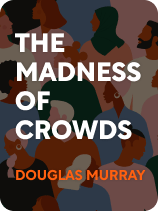

This article is an excerpt from the Shortform book guide to "The Madness of Crowds" by Douglas Murray. Shortform has the world's best summaries and analyses of books you should be reading.
Like this article? Sign up for a free trial here.
What does it mean to be “woke”? Is it a good thing, or does it go too far?
Douglas Murray argues that the West is consumed by an ideology that insists that certain groups endure widespread prejudice and oppression. Therefore, this ideology goes on to insist, these groups should receive sensitivity, accommodations, and apologetic behavior from the social majority.
Read more to get Murray’s take on social justice ideology and wokeism.
Social Justice Ideology & Wokeism
The first pillar of the New Ideology is hyper-concern with social justice, as seen through the phenomenon of wokeism. This hyper-concern amounts to a new way of thinking—social justice ideology. To be “woke,” in its most basic sense, means to be keenly aware of instances of social injustice (for instance, racism or sexism) and to be on guard against them. However, Murray argues, modern wokeism has become more extreme and intolerant. It now sees any conceivable slight against members of minority groups as evidence of widespread oppression. It also encourages both a mob-like mentality and a sense of moral superiority in villainizing and shaming anyone who disagrees with wokeist ideas.
According to Murray, wokeism encourages people from the dominant social class (namely white people) to offer public displays of atonement for perceived injustices against minority groups. For example, a white person might apologize to a Black person for enjoying white privilege (in other words, for experiencing social, economic, and other advantages due to society being inherently racist toward non-white people). They might give this apology despite not being responsible for the race they were born into, and despite civil rights legislation largely erasing, Murray argues, any systemic advantages for white people.
(Shortform note: Some critics also note that racism has ceased to be a major problem (in the US, at least). Therefore, it should now be dealt with and condemned on a largely case-by-case basis. Others disagree—for example, in The New Jim Crow, Michelle Alexander argues that systemic racism persists, especially in the criminal justice system. She explains that Black Americans disproportionately experience greater incarceration rates, harsher sentences, and worse discrimination when trying to rejoin society after incarceration.)
Murray also argues that public displays of atonement like the one described above usually aren’t genuine, empathetic reactions to the traumas minorities have experienced. Instead, they’re often disingenuous gestures meant to protect the person giving the apology from public humiliation, or to help that person to ingratiate themselves with the minority group for personal gain.
(Shortform note: In psychological terms, the tendency to display empathy only when it benefits the offeror is called narcissistic compassion or narcissistic empathy. Clinical psychologist, academic, and conservative political commentator Jordan Peterson (Maps of Meaning, Beyond Order, 12 Rules for Life), who’s a vocal critic of woke ideas, has called narcissistic compassion the greatest danger to human society. Narcissistic compassion may be so dangerous because it arguably threatens to replace the drive toward genuine empathy and compassion—the things that truly bind us with other people—with a selfish, perverse incentive.)
| iGen and Safetyism In The Coddling of the American Mind, Greg Lukainoff and Jonathan Haidt argue that the need to combat every perceived slight to a minority individual is closely linked to the increasing prevalence of safetyism: the idea that protecting individuals from emotional hurt overrides all other ethical priorities. While the authors concede that these slights—also known as microaggressions—can be traumatic and offensive, they emphasize that preoccupation with such experiences can lead a person to: • Enter an ongoing cycle of trauma that enhances a sense of isolation and victimization • Misinterpret what others say or intend because of a predisposition to construe things as hurtful or offensive • Consider themselves entitled to special protection from any idea they don’t agree with Lukainoff and Haidt argue that Safetyism has become particularly prevalent among members of “Generation iGen” (short for Internet Generation). This generation includes those born between 1995 and 2012, whose social development is largely defined by cell phone use, texting, and social media. The authors argue that this generation is particularly susceptible to safetyism due to consistent patterns of overprotection and insulation by their parents, educators, and other caregivers. |

———End of Preview———
Like what you just read? Read the rest of the world's best book summary and analysis of Douglas Murray's "The Madness of Crowds" at Shortform.
Here's what you'll find in our full The Madness of Crowds summary:
- That Western society is consumed by social justice and identity politics
- Why we must combat this ideology and restore opportunities for disagreement
- How conservative viewpoints are being silenced and possible remedies






